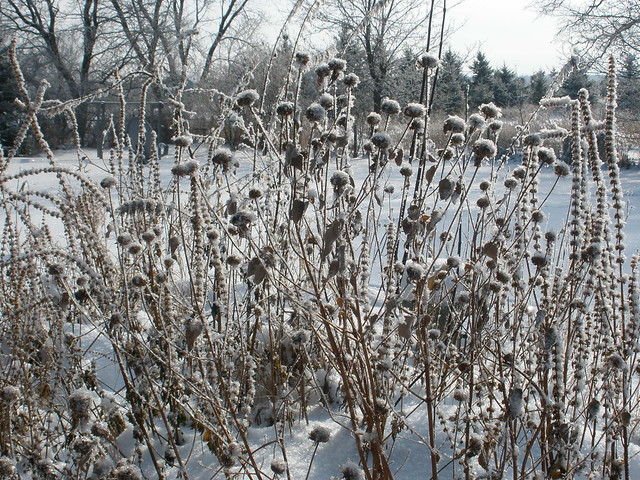Some highlights include:
- The word "naikan" means literally looking inside.
- Naikan involves self-esamination; that is, we examine our own life, no the actions of others. How often is our attention wasted on juding, criticizing, and correcting others while we neglect the examination and lessons of our own life?
- While we can do little or nothing to control how others treat us, we can do much to control how we treat others.
- While we are powerless to impose our choices on others, we make choices about how we shall live, moment to moment, day to day.
- Naikan reflection is based on three questions: What have I received from ______________? What Have I given to ___________________? What troubles and difficulties have I caused ________________?
- As you list what you have received from another person, you become grounded in the simple reality of how you have been supported and cared for. In many cases you may be surprised at the length or importance of the items on your list, and a deeper sense of gratitude and appreciation may be naturally stimulated.
- Begin making a list of what you have received during the past 25 hours. This type of daily reflection is called daily Naikan.
- Examine your "life balance." When you have examined, in detail, what you have given and received, you can determine this balance. You can compare your giving (credits) and taking (debits) in relation to a single person or between you and the rest of the world. You can examine a period of time ranging from a day to a decade.
- What is more appropriate: to go through life with the mission of collecting what is owed us, or to go through life trying to repay our debt to others?
- Make a list of what you have given to others during the past 24 hours. What did you actually do for others?
- The third question is the most difficult of all: What troubles or difficulties have I caused _______________?
- When we reflect on ourselves, we spend at least 60 percent of the time considering how we have caused other trouble. If we are not willing to see and accept those events in which we have been the source of others' suffering, then we cannot truly know ourselves or the grace by which we live.
- Take ten minutes and make a list of the specific troubles and difficulties you have caused others in the past 24 hours.
- Doing this type of daily reflection, or daily Naikan, can be done before bedtime in 20-30 minutes.
- Gratitude requires attention and reflection. If we don't pay attention, the countless and constant ways we are supported go unnoticed. If we don't reflect, we fail to acquire the wisdom that comes with perspective.
- When we reflect on ourselves, we spend at least 60 percent of the time considering how we have caused other trouble. If we are not willing to see and accept those events in which we have been the source of others' suffering, then we cannot truly know ourselves or the grace by which we live.
- Take ten minutes and make a list of the specific troubles and difficulties you have caused others in the past 24 hours.
- Doing this type of daily reflection, or daily Naikan, can be done before bedtime in 20-30 minutes.
- Gratitude requires attention and reflection. If we don't pay attention, the countless and constant ways we are supported go unnoticed. If we don't reflect, we fail to acquire the wisdom that comes with perspective.
If the only prayer you say your entire life is
"Thank you,"
that would suffice.
- Meister Eckhart
- When our attention is focused outward we notice opportunities to give to others. But when our attention is focused inward on our discomfort, anger, inconvenience, or desires, then such opportunities go unnoticed.
- Instead of the question "How can others be of use to me?" we can ask "How can I be of use to others?"
- When we shift our attention to the reality around us, to our spouse, our car, the service station attendant, we see countless opportunities to care for others. But those who are most preoccupied with themselves suffer the most. They also fail to experience the satisfaction of attending to the needs of another.
- In 1726, at the age of 20, Benjamin Franklin created a system to develop his character. In his autobiography, Franklin listed his thirteen virtues as:
- Temperance. Eat not to dullness; drink not to elevation.
- Silence. Speak not but what may benefit others or yourself; avoid trifling conversation.
- Order. Let all your things have their places; let each part of your business have its time.
- Resolution. Resolve to perform what you ought; perform without fail what you resolve.
- Frugality. Make no expense but to do good to others or yourself; i.e., waste nothing.
- Industry. Lose no time; be always employ'd in something useful; cut off all unnecessary actions.
- Sincerity. Use no hurtful deceit; think innocently and justly, and, if you speak, speak accordingly.
- Justice. Wrong none by doing injuries, or omitting the benefits that are your duty.
- Moderation. Avoid extremes; forbear resenting injuries so much as you think they deserve.
- Cleanliness. Tolerate no uncleanliness in body, cloaths, or habitation.
- Tranquillity. Be not disturbed at trifles, or at accidents common or unavoidable.
- Chastity. Rarely use venery but for health or offspring, never to dullness, weakness, or the injury of your own or another's peace or reputation.
- Humility. Imitate Jesus and Socrates.
Pine Needles
Withered, brown pine needles
dangling from a web of lush, green branches.
They shall be washed away
by the same spring rain
which gives life
to the sleeping buds.
- Ho Sen
- Disappointment, resentment, hopelessness - all arise from our efforts to "work out" the lives of others rather than ourselves.
- Throughout the day, when someone does something for you, say a "mindful thank you." Do this by saying thank you and then identifying the act for which you are expressing appreciation. For example, "Thank you for opening the door" or "Thank you for pouring me some orange juice." We can easily get into the habit of saying "thank you" mindlessly: we say the words but pay little attention to what is/was actually done for us. A mindful thank you requires an extra pause to pay attention and consider what we are receiving from the other person.
- Prior to each bite at mealtime, silently thank one person or thing that contributed to the meal. For example, thank the farmer who grew the corn, thank the soil, thank the truck drive who delivered the corn to the store. This is also a great way to slow down your pace if you tend to eat quickly as I do.
- New Year's Naikan Reflection:
-Thanksgiving Blessing:
We give thanks for the food that gives us life and for the beings that have died so that we might continue to live.
We give thanks for the cars and planes and roads that allow us to be together this day.
We give thanks for the health that remains in these temporary bodies of ours.
We give thanks for this shelter that keeps us warm and dry even while we sleep.
We give thanks for our jobs that help us pay for what we need to live.
We give thanks to our parents who brought us into this world.
We give thanks for the mysterious force that keeps our heart beating and our life flowing through our bodies.
We vow to wake up, to live each day fully, to see reality as it is, and to use our life for the purpose for which it was intended.
- Throughout the day, when someone does something for you, say a "mindful thank you." Do this by saying thank you and then identifying the act for which you are expressing appreciation. For example, "Thank you for opening the door" or "Thank you for pouring me some orange juice." We can easily get into the habit of saying "thank you" mindlessly: we say the words but pay little attention to what is/was actually done for us. A mindful thank you requires an extra pause to pay attention and consider what we are receiving from the other person.
- Prior to each bite at mealtime, silently thank one person or thing that contributed to the meal. For example, thank the farmer who grew the corn, thank the soil, thank the truck drive who delivered the corn to the store. This is also a great way to slow down your pace if you tend to eat quickly as I do.
If you judge people,
you have no time to
love them.
- Mother Teresa
- New Year's Naikan Reflection:
- Reflect on your mother, father, or other people who have supported you during the past year. You may have received things during an earlier time period, but still benefited from them during the past year.
- Make a list of 100 things you've received this past year without providing any compensation or consideration. These could be things you received as gifts or things you used without payment.
- Make a list of 25 important services that were done for you during the past year.
- Reflect on your lying and stealing for the past year.
- Reflect on your speech this past year. In what ways have you spoken critically, harmfully, or inappropriately about others. How did this cause harm or trouble?
- Reflect on ways you mistreated objects during the past year.
- What have you learned this past year? Who taught you? Make a list of all the people and objects that helped you to learn and grow, personally, professionally, and spiritually.
- What thank you letters to those who have cared for you and served you this past year.
-Thanksgiving Blessing:
We give thanks for the food that gives us life and for the beings that have died so that we might continue to live.
We give thanks for the cars and planes and roads that allow us to be together this day.
We give thanks for the health that remains in these temporary bodies of ours.
We give thanks for this shelter that keeps us warm and dry even while we sleep.
We give thanks for our jobs that help us pay for what we need to live.
We give thanks to our parents who brought us into this world.
We give thanks for the mysterious force that keeps our heart beating and our life flowing through our bodies.
We vow to wake up, to live each day fully, to see reality as it is, and to use our life for the purpose for which it was intended.



























































